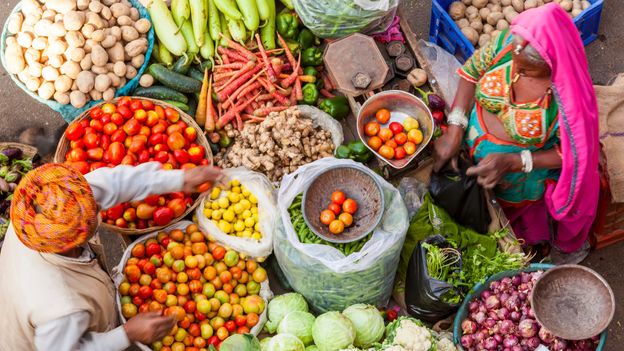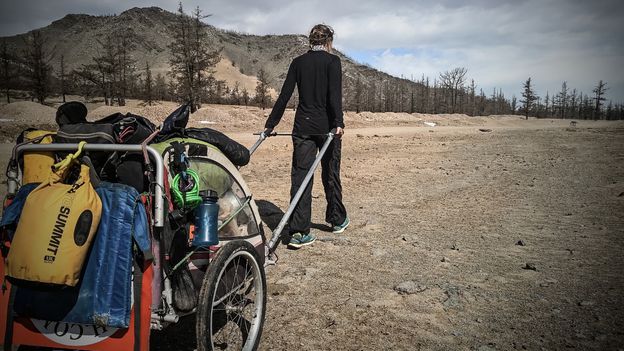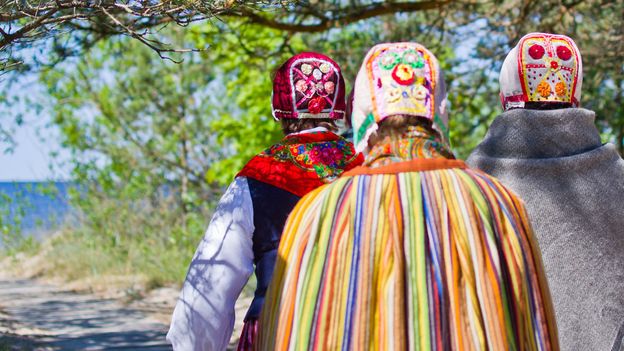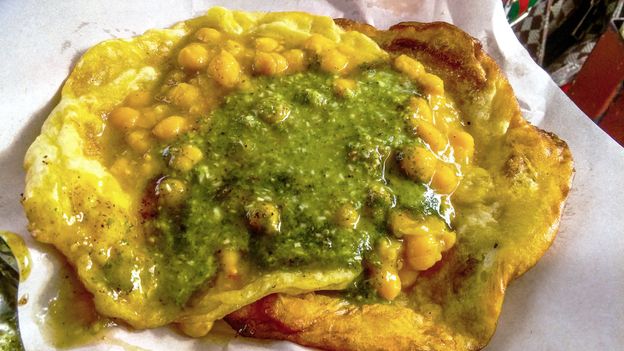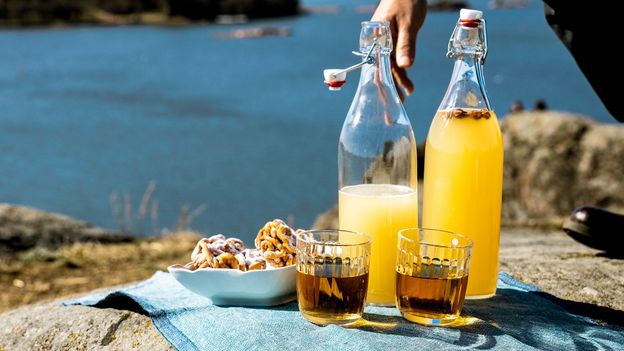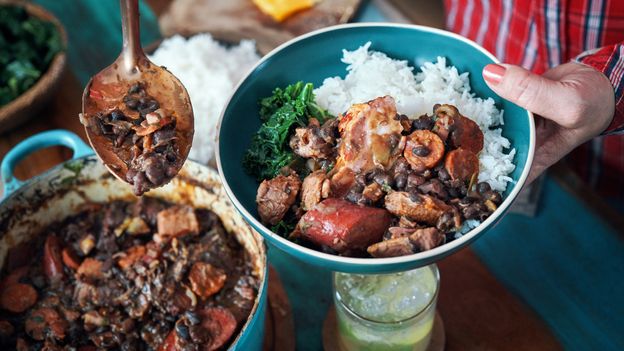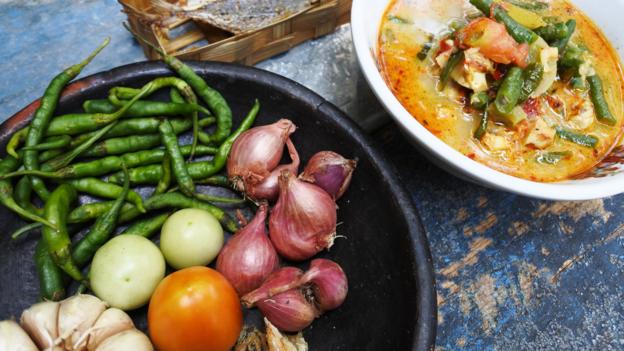Cacio e pepe is a dish of only three ingredients, two of which are evident at first glance to anyone familiar with Roman dialect. Cacio is Romanesco for sheep’s milk cheese. Along with pepe, or black pepper, the cheese – ideally Pecorino – unites with pasta (and a hefty dose of starchy cooking water) to form a rich, creamy sauce that is as delicious as it is difficult to perfect.
“[It’s] as delicious as it is difficult to perfect.
According to legend, the dish first appeared centuries ago among shepherds spending the spring and summer months in the grazing meadows of the Apennine Mountains, which traverse the Italian peninsula. While keeping watch over their flocks, shepherds would tap into personal stores of dried pasta and pepper; cheap, easy to transport and resistant to spoilage, these two ingredients were combined with the cheese (made from milk of the herders’ flocks) to make a delicious, simple dish that kept them warm on cold evenings.
“Black pepper directly stimulates the heat receptors and helped the shepherds to protect themselves from the cold,” explained Alessandra Argiolas, marketing manager for Sardinian Pecorino producers Argiolas Formaggi. “And the pasta guaranteed a lot of energy.”
But according to Angelo Carotenuto, a native Roman and owner and manager of LivItaly Tours, cacio e pepe’s origin may be a bit less romantic. Carotenuto and local guide Dario Bartoli recently took to the internet with a LivTalk, “sort of like a TedTalk gone late-night show” as described by Carotenuto, to profile this and other local pasta dishes.
According to them, dishes like cacio e pepe, carbonara (a rich sauce made with a combination of beaten egg and dry-cured guanciale or pork cheek) and amatriciana (made with guanciale, tomato and Pecorino cheese) likely got their start, not in the mountains, but in the mines and factories that once surrounded the Lazio region encompassing Rome, near where low-income families once lived.
Dried cheese, dried guanciale and dried pasta were filling, cheap and didn’t spoil easily: perfect for a simple, inexpensive meal. And while the first two ingredients would likely have been used locally for “literally centuries,” according to Carotenuto, the invention of these dishes, now perceived as Roman classics, probably dates to the 1800s, when pasta became popular in the Italian capital.
You may also be interested in:
• Italy’s city that revolutionised pasta
• How to make pizza like a Neapolitan master
• Italy’s practically perfect food
“You’re looking at the unification of Italy, so the ability to transfer flavours and recipes easily,” he explained, noting that before unification, the poor would have been getting their carbohydrates from bread and polenta, rather than from pasta, which, Carotenuto explains, is said to have arrived in Italy through the Venetian ports.
However cacio e pepe was invented, one thing is for sure: it has captured many hearts around the world, including that of the late, great Anthony Bourdain. In one episode of No Reservations, Bourdain went so far as to say the dish “could be the greatest thing in the history of the world” – and refused to disclose his favourite cacio e pepe restaurant in Rome.
Cacio e pepe has journeyed far from its humble roots. It has been topped with shaved truffle at London’s Fucina; it has been an off-menu “secret” offering for VIPs at Washington DC’s Rose’s Luxury; and it has been prepared in a wheel of Pecorino and served in a tableside spectacle at New York City’s aptly named Cacio e Pepe restaurant. Closer to home in Rome, the dish has gone upscale, appearing on the three-Michelin-starred menu at La Pergola.
But despite its international acclaim and elevated status, at its core, cacio e pepe remains a stalwartly simple dish.
Like many Italian classics, the secret to its success is the purity of its ingredients. To deviate from its three-part formula is to risk angering a local.
“We’re pretty strict about how these things should taste,” said Carotenuto.
For starters, the pasta. Most make cacio e pepe with spaghetti, though the true traditional recipe calls for tonnarelli, a similar local noodle with a bit more chew thanks to the addition of egg.
“That’s what I would order if I was in a restaurant,” explained Elizabeth Minchilli, culinary tour guide and author of Eating Rome: Living the Good Life in the Eternal City. “If I was at home and couldn’t get that, I would probably go with spaghetti.”
Either way, a long noodle is crucial to achieving the perfect texture.
“You really want to coat every strand with the cheese, and the fat from the cheese, and the starch from the water,” said Minchilli. “It just makes stirring really fast easier.”
The next ingredient, pepe or black peppercorn, should be freshly crushed to release all of its aromas. Many chefs, including Filippo and Giovanni Rinaldi of London’s Mammafarina pasta pop-ups, “bloom” the pepper in the pan by toasting it slightly, making it even more flavourful.
And then, of course, there’s cacio, or as the Renaldis call it, “her majesty, Pecorino!”.
“Pecorino is very important because of the flavour and sapidity that this cheese brings to the dish,” they said, noting that either Pecorino Romano or Pecorino Sardo (from Sardinia) can be used.
While the Rinaldis say that, “it should be forbidden to make cacio e pepe without Pecorino”, some do deviate a bit from this norm by adding another, more familiar cheese: Parmesan.
From a historical perspective, it’s an unusual choice, explained Argiolas.
“Cacio e pepe is a recipe of the Roman tradition,” she said, noting that already in 48BC, Virgil was describing the nutritional properties of the local sheep’s milk cheese. Parmesan, which hails not from Rome but from Emilia Romagna, is milder, nuttier and sweeter – the root of an Alfredo sauce, which Carotenuto calls “cacio e pepe for the American sweet tooth”.
But despite tradition, Americans are not the only ones to sub subtler Parmesan for in-your-face Pecorino. Massimo Bottura popularised an all-Parmesan version in 2012, after the Emilia Romagna region was hit by a devastating earthquake. And other cooks, like Minchilli, will cut an especially strong piece of Pecorino with a bit of Parmesan, to mellow it.
“It’s not blasphemous to add some Parmesan cheese to the Pecorino,” said Carotenuto. “Pecorino is a very strong, salty cheese. The starchy water kind of slows that taste down, so in my opinion, you don’t need Parmesan cheese. But you certainly can, especially if you’re giving it to children.”
“If all you have is a good-quality Parmigiano,” echoed Minchilli, “the cacio e pepe police are not going to come and arrest you!”
“It’s pretty typical of an Italian dish where, behind this simplicity, hides a fairly complex technicity”
The ingredients for cacio e pepe may be simple, but the technique requires a bit of finesse to perfect, according to Simone Zanoni, chef of Le George Restaurant in Paris.
“It’s pretty typical of an Italian dish where, behind this simplicity, hides a fairly complex technicity.”
The technique, in this case, is to unite the starchy pasta cooking water with very finely grated cheese to create a rich sauce with no added cream.
“If you tell someone who lives in Rome that you put cream in cacio e pepe…” Zanoni chuckled, “he’ll jump on your head!”
Instead, one must patiently and slowly incorporate the starchy water reserved from cooking the pasta with the cheese and the pasta itself until a smooth emulsion forms.
“Everything has to be the right temperature when you add it together, otherwise you get this sort of plate of noodles with a clotted piece of cheese at the bottom,” said Minchilli. “And it’s just not what you’re dreaming of.”
When you do get that elusive texture, cacio e pepe becomes the ideal comfort food.
“Cacio e pepe is a challenge, but also a dish that’s hard not to love,” said Meryl Feinstein, founder of the Pasta Social Club in Austin, Texas. “It feels like an accomplishment – for me included – when that glossy, emulsified sauce emerges. Plus, it’s made with few ingredients, and many you likely already have in your kitchen, so it fits in well with the need for pantry-friendly recipes.”
The flavour profile of cacio e pepe has spawned dozens of iterations, from gnocchi to risotto to lasagne. There are versions that make life easier, like Rachael Ray’s ricotta-based cacio e pepe mac and cheese. There are versions that make it even more over-the-top, like David Chang’s recipe with house-fermented ceci (chickpeas) in place of cacio at Momofuku Nishi; or the “taco” of cacio e pepe pasta served in a crispy chicken cutlet at New York’s Noble Kitchen. Paris-based chef Taku Sekine of Paris’ Dersou and Cheval d’Or recently posted a cacio e pepe pizza on his Instagram feed, noting that it’s easy to make at home, as “the ingredients are often there”.
“You can make it whenever the spirit moves you, just like cacio e pepe,” he said. “Of course… you need to make the pizza dough.”
For Zanoni, however, merely combining Pecorino and pepper does not cacio e pepe make.
“We wouldn’t call cacio e pepe pizza ‘cacio e pepe…’ we’d call it ‘a pizza with cheese and pepper’,” he said. “There’s a vision of tradition that’s completely different, and abroad it has taken on a completely different vision than what we have in Italy.”
One thing is for sure: cacio e pepe has captured the attention of home cooks around the world, especially given current confinement protocols.
“It’s funny to see how pasta, which abroad has always been perceived as this easy-to-make dish, is changing,” said Zanoni, who often gets requests for a gourmet version of cacio e pepe from his one-Michelin-star kitchen in Paris. “People are starting to give it a gastronomic identity.”
And whether you’re going crazy with new-fangled versions or sticking to the classic, it’s a comfort food dish that tastes great.
“With confinement, we’re coming back to old issues: that we couldn’t always access fresh products, and so we had things that we could keep around for a long time,” said Zanoni. “What better than a hunk of Pecorino, spaghetti and a bit of pepper?”
—
Simone Zanoni’s Spaghetti Cacio e Pepe
Ingredients:
200g high-quality, artisanal spaghetti (Zanoni uses Neapolitan spaghetti)
4-7g wild black peppercorns (adjust to taste, depending on the assertiveness of the pepper)
160g Pecorino Romano, plus two pieces Pecorino rind
3l water seasoned with 15g of kosher salt
Instructions:
Prepare your mise en place (the French world for having all your ingredients prepped and measured) in advance. Crush the peppercorns with a mortar and pestle. (If you do not have a mortar and pestle, use the bottom of a saucepan to crush them on a chopping board.) Grate the Pecorino with a Microplane (grater).
Bring the water to a boil, season with the salt, and add the spaghetti. Stir gently at the beginning to keep the pasta from sticking to the bottom of the pot.
Meanwhile, toast ¾ of the pepper in a pan over low heat until aromatic, about 1 minute. Be careful not to burn the pepper. Remove the pan from the heat, and gently add 2 to 3 ladlefuls of starchy pasta water to the pepper. Bring to a boil. Add the cheese crusts and simmer.
When the spaghetti is half-cooked (after about six minutes), transfer it to the pan with the peppercorns and starchy pasta water, reserving the remaining cooking water. Transfer another ladleful of water to the pan. After a few more minutes, remove the Pecorino rinds, and place them in a non-stick pan over medium heat to toast on both sides. When nicely toasted, remove and set aside.
Meanwhile, continue cooking the spaghetti until two minutes before al dente (cooked “to the tooth” with a slight bite). Turn off the heat and allow the pasta to rest; there should be a bit of cooking water left in the pan.
After about a minute off the heat, begin adding the grated cheese to the pasta from above, shaking the pan all the while to coat evenly. Add cooking water as needed to help the sauce bind; the sauce will thicken as the pasta sets.
Serve the pasta in a warmed dish. Top with the remaining pepper and a little bit of freshly grated Pecorino. Finely slice the toasted Pecorino rinds and sprinkle on top.
—
Culinary Roots at Home is a BBC Travel series that looks to trending recipes and traces their origins, offering the story behind the dish as well as easy tips on how to make them.
Join more than three million BBC Travel fans by liking us on Facebook, or follow us on Twitter and Instagram.
If you liked this story, sign up for the weekly bbc.com features newsletter called “The Essential List”. A handpicked selection of stories from BBC Future, Culture, Worklife and Travel, delivered to your inbox every Friday.


